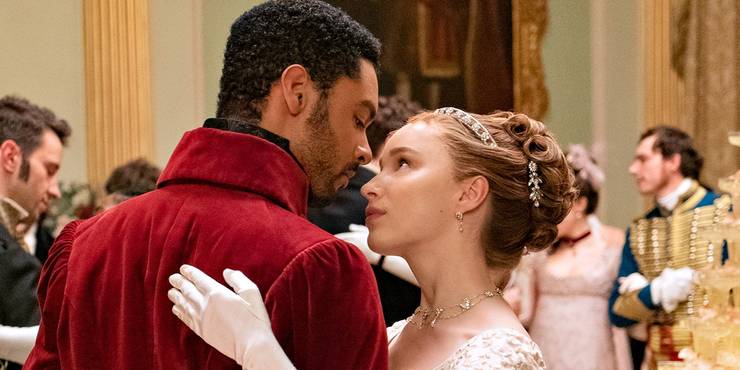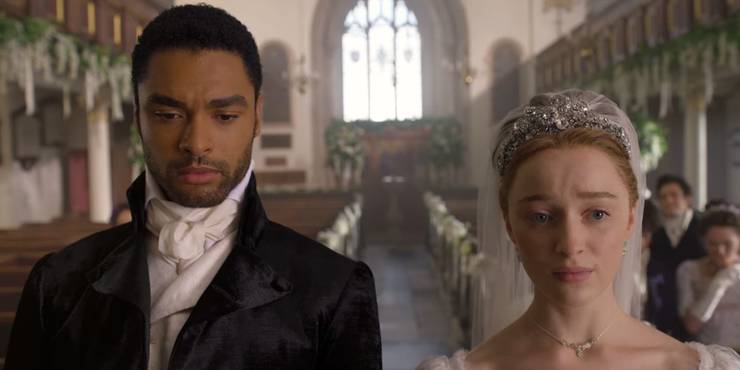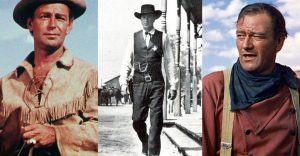Bridgerton: Every Pride And Prejudice Easter Egg & Reference

Netflix’s new Regency Era drama, Bridgerton, pays homage to the quintessential Regency Era drama, Pride and Prejudice, in several ways. The steamy and scandal-filled Bridgerton cleverly modernizes the somewhat outdated Regency Era adaptation format. Most notably, the Netflix series features actors of color in a wide range of roles, and Bridgerton broaches the topic of sex in a (mostly) progressive way, neither of which are attempted in Jane Austen’s original novel or the most popular film adaptations of Pride and Prejudice from 2005 and 1995 – starring Keira Knightley and Colin Firth, respectively.
For decades, Regency romance roles have been exclusive to white actors, with directors and writers often citing historical accuracy. But Bridgerton has proven that historical accuracy isn’t necessarily relevant in fiction and that other things, like representation, are more important. As for sex in Pride and Prejudice – well, it never develops beyond tension. By contrast, Bridgerton introduces Daphne’s older brother, Anthony, mid-coitus barely three minutes into the first episode. Needless to say, the remainder of Bridgerton season 1 is nothing like Pride and Prejudice in the bedroom (or on the stairs, in the garden, under the bleachers, on a ladder, etc.).
That said, Pride and Prejudice obviously influenced Bridgerton, even though it’s difficult to pinpoint elements of Bridgerton that were explicitly drawn from Pride and Prejudice. But because Pride and Prejudice originated and popularized many Regency Era romance tropes, many things in Bridgerton can likely be traced back to Pride and Prejudice, whether Bridgerton book author Julia Quinn or the creators of the Netflix show were aware of these connections or not. Here is a breakdown of all the Pride and Prejudice references and Easter Eggs from season 1 of Bridgerton.
Bridgerton Is Set In 1813 / Pride and Prejudice Was Published in 1813

It’s unclear whether this is an intentional Easter egg placed by either Julia Quinn or showrunner Chris Van Dusen, but Lady Whistledown confirms that Bridgerton is set in 1813 and Jane Austen’s most famous written work, Pride and Prejudice, was published in that same year. Coincidence or not, it’s a perfectly subtle way to honor one of Bridgerton‘s inspirations – and it’s something that only the most die-hard Regency Era fans might notice.
Daphne Bridgerton And Simon, Duke of Hastings / Elizabeth Bennett and Mr. Darcy

Daphne and Simon are clearly meant to resemble Lizzie and Mr. Darcy, but Daphne is perhaps more comparable to the extraordinarily beautiful Jane Bennett than the plain and down-to-earth Lizzie. It’s clear from the opening scene that Daphne takes a great deal of interest in her appearance, widely regarded as one of the prettiest faces in town – the Bridgertsons are nearly late for Daphne’s debut before the queen because she’s fussing over her appearance and, once she arrives, all eyes are on her. However, Daphne relishes the attention, while Jane Bennett is a timid and reserved young woman whose kindness supersedes her beauty.
Simon, too, is not very much like Mr. Darcy beyond a shallow comparison. Darcy is notoriously antisocial and, while that may be true of Simon, it’s for quite different reasons. Darcy’s discomfort in social situations comes off as genuine social anxiety – he’s frequently awkward and tense, whereas Simon is always suave, smooth, confident, and quick-witted. Simon is very sociable and he’s only uninterested in social gatherings because he’s uninterested in marriage and no one will leave him alone about it. But once he is at a ball, Simon, the Duke of Hastings will party and dance as much as anyone else.
The Featheringtons / The Bennetts

In Pride and Prejudice, Elizabeth Bennett has four sisters – Jane, Mary, Kitty, and Lydia. With no brothers in the family, the urgency to make a suitable match is ever-present. In Bridgerton, Daphne comes from a large, wealthy, and respectable noble family, with plenty of brothers to keep the money in the immediate Bridgerton family and care for the Bridgerton sisters. However, there is another family in Bridgerton that bears some resemblance to the Bennetts.
The Featheringtons arguably mimic the Bennetts far more than the Bridgertons. While Mr. and Mrs. Bennett are a bit more likable than Lord and Lady Featherington, they have their faults – and some of those faults overlap with the Lord and Lady in Netflix’s series. Similar to Mr. Bennett, Lord Featherington is a bit aloof and has a soft spot for his daughters, though Mr. Bennett’s obvious favorite is Lizzie. Like Mrs. Bennett, Lady Featherington is superficial, frivolous, and preoccupied with marrying off her daughters. Lady Whistledown even describes Lady Featherington as “tasteless and tactless.”
Phillipa and Prudence are like an ugly stepsister twist on Kitty and Lydia, all of whom serve a general purpose as foils for the leading ladies. However, Penelope Featherington is much more like Elizabeth Bennett than Daphne. Like Lizzie Bennett, Penelope prioritizes female friendship, loves books, resents the restrictions placed on her by society, and desires to marry for love – all while understanding that she doesn’t have many of the luxuries afforded to men or wealthier women.
Daphne and Simon’s Relationship / Lizzie And Darcy’s Relationship

Daphne and Simon’s story in Bridgerton — the “will they, won’t they” relationship — is a common trope in romance, but certainly one of the most well-known examples of this trope in literature is the relationship of Darcy and Elizabeth in Pride and Prejudice. At first, Darcy is smug and Elizabeth is uninterested. But they find themselves thrown together repeatedly, with each visit growing increasingly amicable until they both realize that they are, in fact, in love with each other. At the end of the novel (and most film adaptations), Elizabeth accepts Darcy’s proposal.
In the first episode of Bridgerton, when Simon (Regé-Jean Page) and Daphne (Phoebe Dynevor) meet, Simon is similarly smug and Daphne equally uninterested. Also, Daphne and Simon’s dancing scenes in Bridgerton are remarkably like scenes in Pride and Prejudice when Elizabeth and Darcy dance – the world disappears (literally, in the case of Pride and Prejudice (2005) and a dream sequence of Daphne’s in Bridgerton) and the tension is palpable, but it’s obvious they’re falling in love. However, the similarities to Darcy and Elizabeth start to disappear after that point.
Daphne’s Rejection Of Nigel Berbrooke / Lizzie’s Rejection of Mr. Collins

In Pride and Prejudice, Lizzie famously rejects her distant cousin, Mr. Collins, when he proposes to her. He’s odious, pedantic, and insults nearly every member of Lizzie’s family. Nigel Berbrooke takes that cruelty a step further by attempting to assault Daphne, presumably so he can force her into a marriage. Daphne and Lizzie are both adamant in their distaste for Nigel and Collins – Lizzie minces no words when she tells Collins to get lost, and Daphne punches Nigel right between his eyes. Both scenes are immensely satisfying to watch as our heroines escape two terrible prospects for marriage.
Daphne And Simon’s Fight / Lizzie and Darcy’s Fight In Pride and Prejudice (2005)

Another passionate and rain-soaked scene occurs in the 2005 film version of Pride and Prejudice when Lizzie and Darcy have a heated argument, in the midst of which Darcy proposes and Lizzie rejects him. Lizzie and Darcy get agonizingly close to doing exactly what Daphne and Simon do in episode 5, “The Duke and I” – ending their argument about Daphne’s engagement to Prince Friedrich with a full-blown make-out session. It might not be an explicit reference, but the two scenes definitely play off the same emotions of anger, passion, and desire, even though they end very differently.
Simon And Daphne’s Forced Marriage / Lydia and Mr. Wickham’s Forced Marriage

It might be a bit of a stretch, but once again, a common Regency Era trope pops up in both Bridgerton and Pride and Prejudice. In Pride and Prejudice, Elizabeth’s younger sister, Lydia, runs away with Mr. Wickham. Darcy tracks the young couple down and facilitates their wedding to save Elizabeth’s entire family from scandal and ruin. In Bridgerton, Daphne and Simon are caught sharing a passionate kiss (and then some) by Daphne’s brother, who all but forces Simon and Daphne into marriage to avoid possibly being exposed by Lady Whistledown – though there are some extra steps involved, like a duel between Simon and Anthony that ends with Daphne intervening and convincing Simon that marrying her would be better than dying.
Simon And Daphne In The Rain / Colin Firth As Mr. Darcy In Pride And Prejudice (1995)

In Bridgerton season 1, episode 6, “Swish,” Daphne and Simon spend their honeymoon at Simon’s massive estate, exploring (among other things) the large house and sprawling grounds. While an instrumental cover of Taylor Swift’s “Wildest Dreams” plays in the background, Simon and Daphne are caught in the rain. This scene is probably the only one that could be considered a legitimate Easter egg since showrunner Chris Van Dusen confirmed that the romantic atmosphere and rain-soaked clothing were inspired by Colin Firth’s portrayal of Darcy. In Pride and Prejudice, there’s a particularly infamous scene where he has a hilariously awkward conversation with Elizabeth after emerging from a lake, fully clothed and sopping wet, with his thin white shirt clinging to his torso. That’s about as steamy as it gets in BBC’s adaptation of Pride and Prejudice, but don’t be fooled – it’s pretty swoon-worthy and Bridgerton was wise to copy it.
While Pride and Prejudice has been around for two hundred years and has been adapted, parodied, and retold hundreds (if not thousands) of times, Bridgertonhas found a way to revitalize the genre that Pride and Prejudice originated while paying subtle tribute to the gold standard of Regency Era romance novels through its characters, themes, setting, and story.
About The Author

















